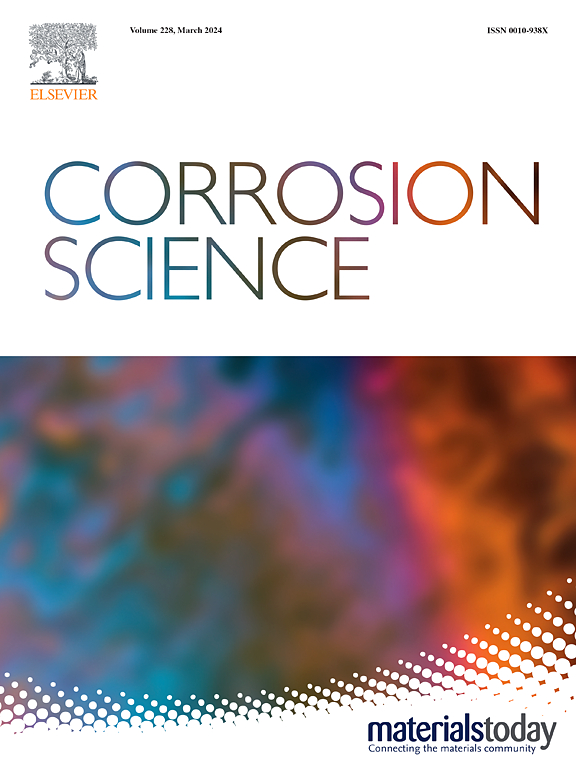通过对比慢应变速率拉伸试验和裂纹生长试验,深入了解不同温度下海洋环境中 M54 超高强度钢的应力腐蚀开裂情况
IF 7.4
1区 材料科学
Q1 MATERIALS SCIENCE, MULTIDISCIPLINARY
引用次数: 0
摘要
研究了不同温度下海洋环境中 M54 钢的应力腐蚀开裂情况。慢应变速率拉伸试验表明,温度从 5°C 升至 45°C 会导致完全浸泡环境下塑性伸长率和面积比分别下降 71.9% 和 77.4%,而大气环境下仅下降 7.8% 和 7.9%。在大气环境中,da/dtII 从 0.75 nm/s 增至 5.5 nm/s,但在完全浸泡环境中,da/dtII 先减小后增大。与完全浸泡环境相比,大气环境中裂缝内充足的氧气供应可将 da/dtII 降低 50-80%。本文章由计算机程序翻译,如有差异,请以英文原文为准。
Insights into the stress corrosion cracking of M54 ultra-high-strength steel in the marine environments at varying temperatures by comparison of slow strain rate tensile and crack growth tests
The stress corrosion cracking of M54 steel in marine environments at varying temperatures was investigated. The slow strain rate tensile tests show that increasing the temperature from 5 to 45°C leads to a 71.9 % and 77.4 % decrease in plastic elongation ratio and reduction in area ratio in full immersion environments, while only 7.8 % and 7.9 % in atmospheric environments. The da/dtII increases from 0.75 nm/s to 5.5 nm/s in atmospheric environments, but first decreases and then increases in full immersion environments. Compared to full immersion environments, the sufficient oxygen supply within the crack in atmospheric environments lowers da/dtII by 50–80 %.
求助全文
通过发布文献求助,成功后即可免费获取论文全文。
去求助
来源期刊

Corrosion Science
工程技术-材料科学:综合
CiteScore
13.60
自引率
18.10%
发文量
763
审稿时长
46 days
期刊介绍:
Corrosion occurrence and its practical control encompass a vast array of scientific knowledge. Corrosion Science endeavors to serve as the conduit for the exchange of ideas, developments, and research across all facets of this field, encompassing both metallic and non-metallic corrosion. The scope of this international journal is broad and inclusive. Published papers span from highly theoretical inquiries to essentially practical applications, covering diverse areas such as high-temperature oxidation, passivity, anodic oxidation, biochemical corrosion, stress corrosion cracking, and corrosion control mechanisms and methodologies.
This journal publishes original papers and critical reviews across the spectrum of pure and applied corrosion, material degradation, and surface science and engineering. It serves as a crucial link connecting metallurgists, materials scientists, and researchers investigating corrosion and degradation phenomena. Join us in advancing knowledge and understanding in the vital field of corrosion science.
 求助内容:
求助内容: 应助结果提醒方式:
应助结果提醒方式:


